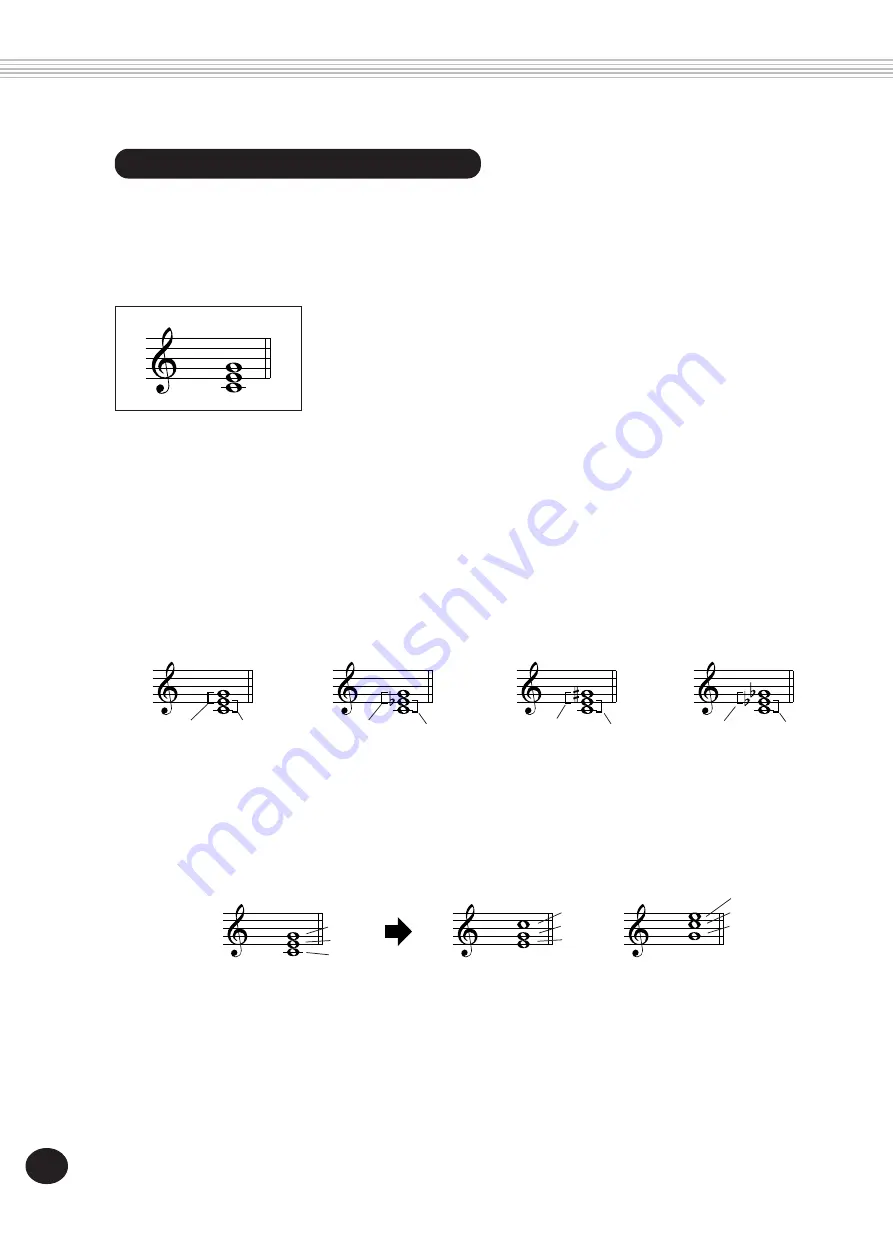
60
The simple answer:
Three or more notes played simultaneously is a chord. (Two notes played
together is an “interval” — an interval being the distance between two different notes. This is
also referred to as a “harmony.”) Depending on the intervals between the three or more notes,
a chord can sound beautiful or muddy and dissonant.
The organization of notes in the example at left — a triad chord —
produces a pleasant, harmonious sound. Triads are made up of
three notes and are the most basic and common chords in most
music.
In this triad, the lowest note is the “root.” The root (also called the “tonic”) is the most impor-
tant note in the chord, because it anchors the sound harmonically by determining its “key” and
forms the basis for how we hear the other notes of the chord.
The second note of this chord is four semitones higher than the first, and the third is three
semitones higher than the second. Keeping our root note fixed and changing these notes by a
semitone up or down (sharp or flat), we can create four different chords.
Keep in mind that we can also change the “voicing” of a chord — for example, change the
order of the notes (called “inversions”), or play the same notes in different octaves — without
changing the basic nature of the chord itself.
Beautiful sounding harmonies can be built in this manner. The use of intervals and chords is one
of the most important elements in music. A wide variety of emotions and feelings can be cre-
ated depending on the types of chords used and the order in which they are arranged.
Inversion examples for the key of C
G
E
C
C
G
E
E
C
G
Major chord
(ex. C)
Minor
3rd
Major
3rd
Minor chord
(ex. C
m
)
Major
3rd
Minor
3rd
Augmented chord
(ex. C
aug
)
Major
3rd
Major
3rd
Diminished chord
(ex. C
dim
)
Minor
3rd
Minor
3rd
WHAT IS A CHORD?
AUTO ACCOMPANIMENT — THE STYLE MODE
58
Содержание PortaTone PSR-270
Страница 1: ......
Страница 120: ...M D G EMI Division 1999 Yamaha Corporation V332710 PO 01A0 Printed in China...
















































